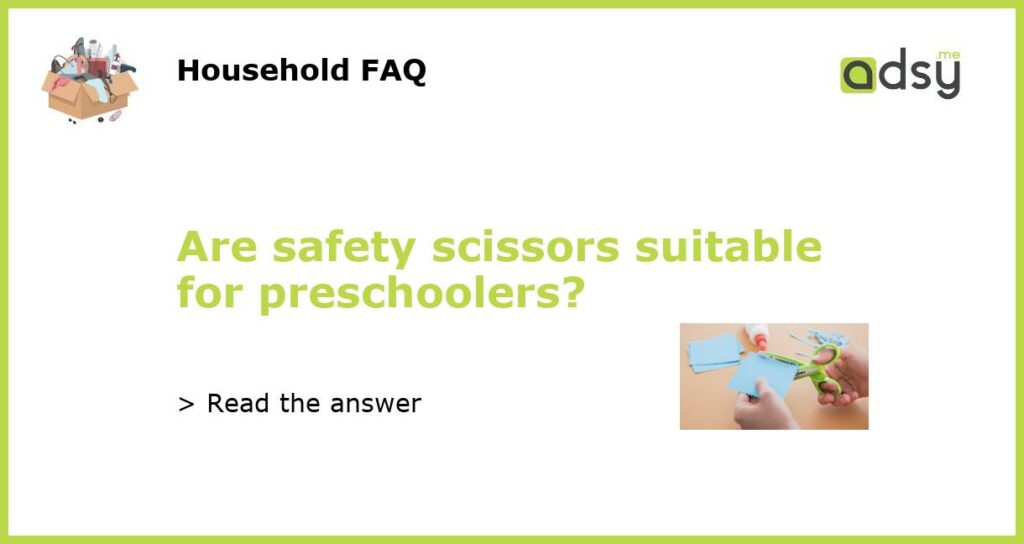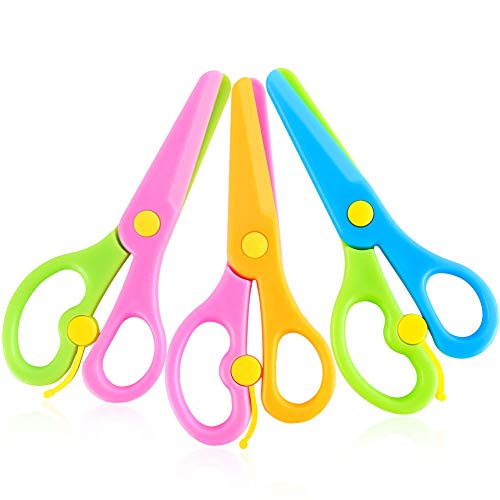Are Safety Scissors Suitable for Preschoolers?
As a parent or guardian, it’s important to prioritize your child’s safety in every aspect of their life, including their playtime activities. When it comes to using scissors, especially for preschoolers, the question often arises as to whether safety scissors are suitable for them. Safety scissors are designed with features that minimize the risk of accidents, but it’s crucial to consider various factors when determining if they are appropriate for preschoolers. Let’s dive deeper into this question to understand the pros and cons of using safety scissors for preschoolers.
The Advantages of Safety Scissors for Preschoolers
Safety scissors are specifically designed to reduce the risk of injuries, making them a suitable option for preschoolers. Here are some advantages of using safety scissors:
- Blunt Tips: Safety scissors have rounded or blunt tips, which significantly decrease the likelihood of accidental stabbings or injuries.
- Plastic Construction: Most safety scissors are made of plastic, which is less likely to cause serious injuries compared to metal scissors. Plastic construction also reduces the risk of sharp edges.
- Easy Grip Handles: Safety scissors often come with ergonomic, easy-grip handles that are designed to fit small hands comfortably. This feature promotes proper scissors handling and reduces the risk of slips or accidents.
- Less Cutting Power: Safety scissors have blades that require less force to cut through material, minimizing the risk of cutting too deep or accidentally cutting skin.
The Limitations of Safety Scissors for Preschoolers
While safety scissors have their advantages, there are also limitations to consider when determining their suitability for preschoolers:
- Limited Cutting Ability: Safety scissors are designed to be safe, but this often means sacrificing cutting efficiency. Preschoolers may find it frustrating and challenging to cut through thicker materials, such as cardstock or felt.
- Lack of Versatility: Safety scissors typically have limited cutting capabilities, unlike regular scissors. Preschoolers might need assistance from adults when wanting to cut various materials or shapes.
- Sense of False Security: The added safety features of safety scissors might give preschoolers a false sense of security, leading to a lack of caution or improper scissor handling when they eventually use regular scissors.
When to Introduce Safety Scissors to Preschoolers
The suitable age to introduce safety scissors to preschoolers varies from child to child. However, it generally depends on their fine motor skills development and ability to follow safety instructions. Here are some guidelines:
- Age 3-4: Introduce safety scissors with close supervision. Show them how to hold the scissors correctly and teach them basic cutting techniques using simple materials like paper or playdough.
- Age 4-5: As their fine motor skills develop, preschoolers can start practicing cutting various shapes and patterns with safety scissors. Encourage them to explore their creativity while providing guidance and supervision.
- Age 5-6: By this age, preschoolers may be ready to graduate to regular children’s scissors, which offer more cutting power and versatility. However, adult supervision is still necessary.
The Importance of Supervision
While safety scissors can be a suitable choice for preschoolers, it’s essential to prioritize supervision and guidance during scissor activities. Regardless of the type of scissors used, accidents can still occur if proper safety measures are not followed. Ensure preschoolers are taught how to use scissors responsibly, including keeping fingers away from the blades, only cutting appropriate materials, and understanding when and where scissors can be used. By incorporating these measures, preschoolers can safely explore their creativity and develop their fine motor skills through scissor activities.






